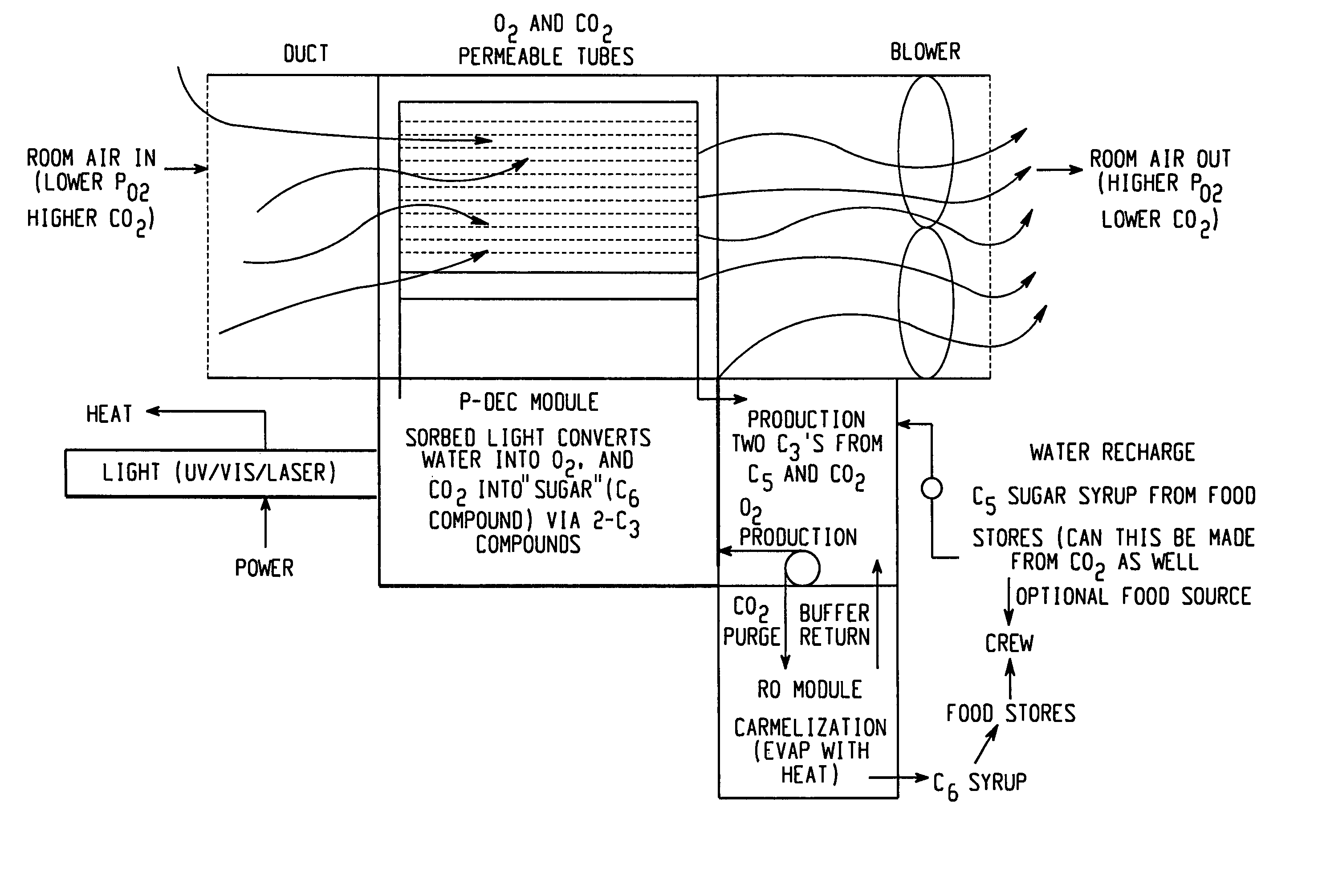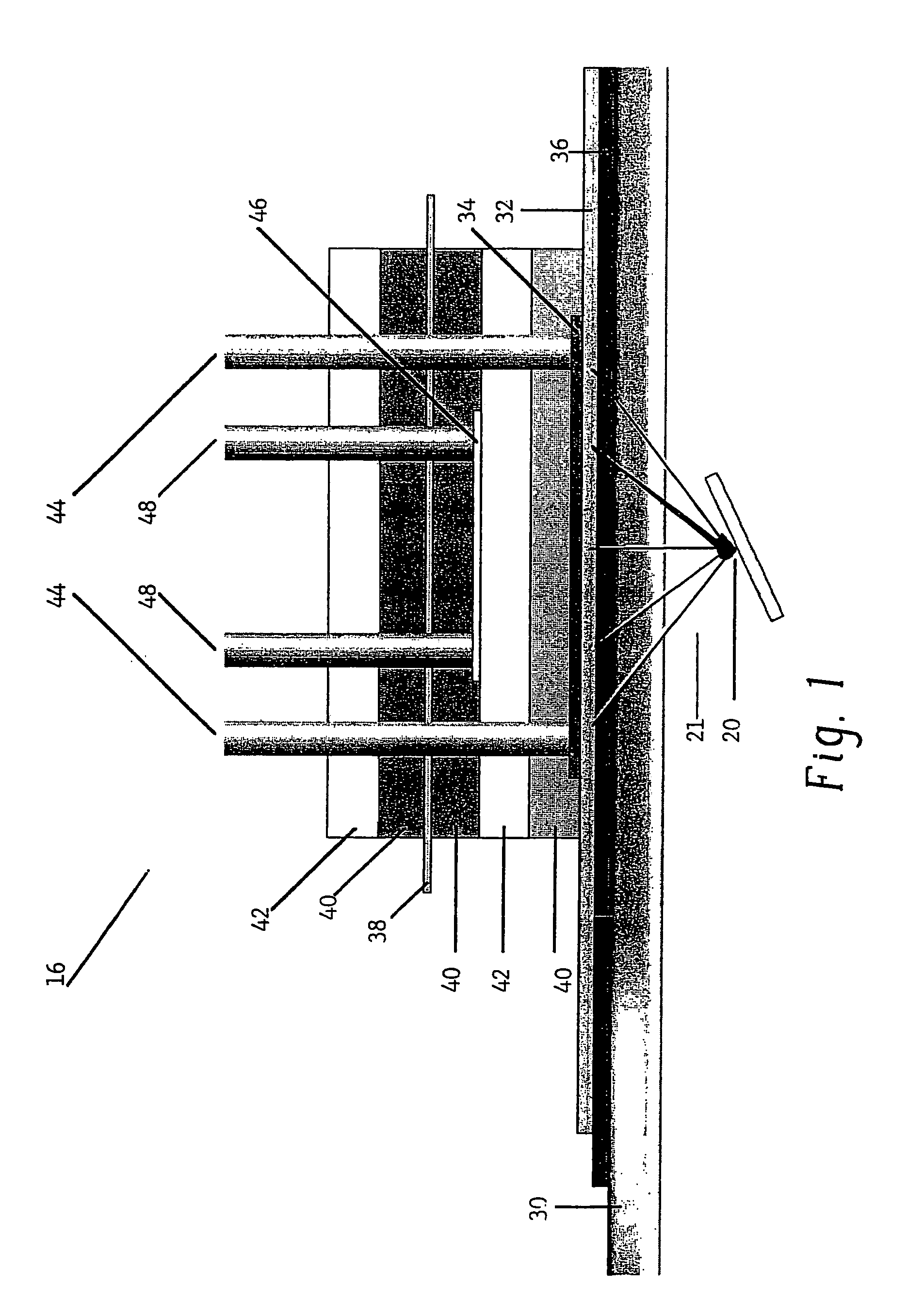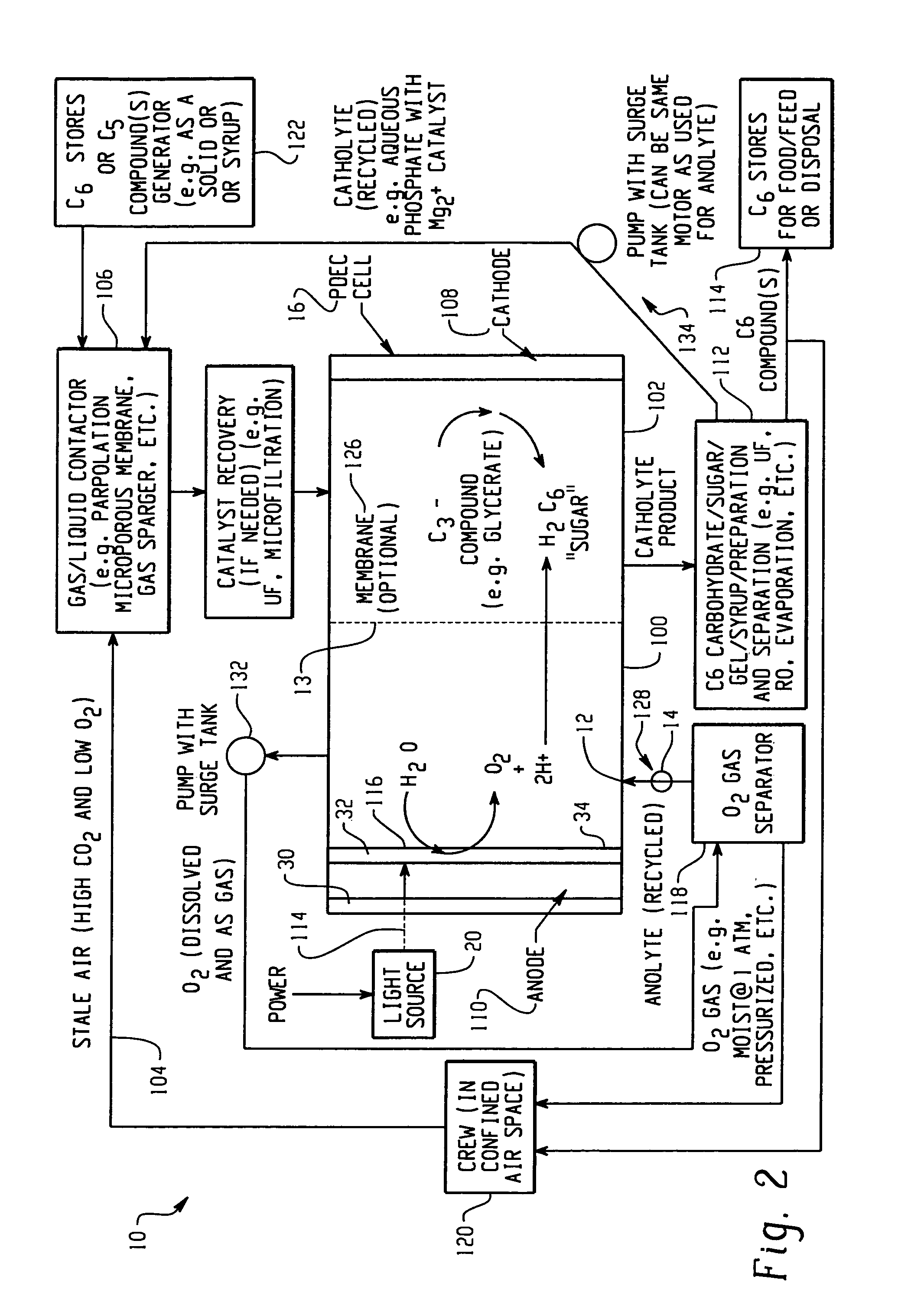Photolytic oxygenator with carbon dioxide fixation and separation
a technology of oxygenator and carbon dioxide, applied in the direction of separation process, lighting and heating apparatus, heating types, etc., can solve the problems of high risk of sudden release of large amounts of pure oxygen gas, high heat required and high risk of pure oxygen gas capture, storage and disposal, etc., to improve o2 yield and co2 clearance
- Summary
- Abstract
- Description
- Claims
- Application Information
AI Technical Summary
Benefits of technology
Problems solved by technology
Method used
Image
Examples
example 1
[0121]In this example, oxygen is produced and carbon dioxide is removed from stale air using water, C3 or C5 compounds and photolytic energy. Referring now to FIG. 2, a PDEC cell 16 is used for the central reaction of producing oxygen in the anode compartment 100 and producing a C6 compound, such as hexose sugar, from carbon dioxide in the cathode compartment 102.
[0122]In this regard, stale air (high in CO2 and low in O2) 104 is first contacted with a liquid such as a recycled catholyte (e.g. aqueous phosphate with Mg2+ catalyst) in gas / liquid contactor 106 to convert the carbon dioxide into dissolved form in the liquid, normally CO2 (aq), but could also be HCO3, H2CO3 and / or CO32−. The gas / liquid contactor 106 can be in a counter flowing percolating bed, a micro-porous membrane, gas sparger, etc.
[0123]The dissolved carbon dioxide catalyst, glycerate, and pentose and the liquid then flow into the cathode compartment 102 of the PDEC cell 16. Pentose can also be contained in the conta...
example 2
[0125]This example illustrates the production of oxygen and the reduction of CO2 through the formation of a C3 compound intermediary. Referring now to FIG. 3, a PDEC cell 16 is used for the central reaction of producing oxygen and reducing the carbon dioxide obtained from the confined space 120. Stale air 104 is first contacted with a liquid such as aqueous brine containing a α-keto pentose containing a catalyst typically of mixtures of Mg2+ / PO43− electrolyte gas / liquid at contactor 106 to convert the carbon dioxide into dissolved form in the liquid. This contact at contactor 106 may be in a counter flowing circulating bed, a porous membrane, or in a percolating bed, etc. The dissolved carbon dioxide, e.g. now in the carbon dioxide laden electrolyte, is also contacted with the C5 pentose obtained from stores 122, also containing a catalyst, e.g. rubisco type enzymatic catalyst or a derivative compound for this enzyme. In this manner the CO2 and α-keto ribulose is converted to two C3...
PUM
| Property | Measurement | Unit |
|---|---|---|
| thickness | aaaaa | aaaaa |
| diffusion distance | aaaaa | aaaaa |
| wave lengths | aaaaa | aaaaa |
Abstract
Description
Claims
Application Information
 Login to View More
Login to View More - R&D
- Intellectual Property
- Life Sciences
- Materials
- Tech Scout
- Unparalleled Data Quality
- Higher Quality Content
- 60% Fewer Hallucinations
Browse by: Latest US Patents, China's latest patents, Technical Efficacy Thesaurus, Application Domain, Technology Topic, Popular Technical Reports.
© 2025 PatSnap. All rights reserved.Legal|Privacy policy|Modern Slavery Act Transparency Statement|Sitemap|About US| Contact US: help@patsnap.com



